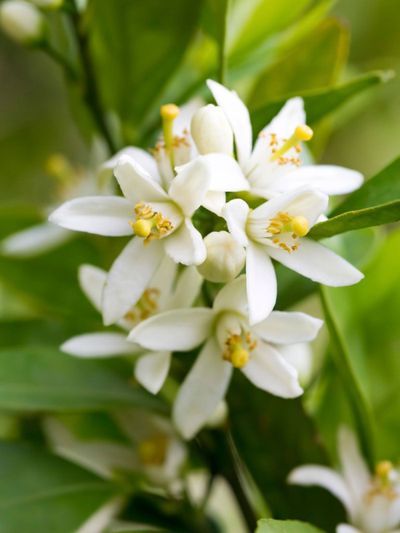Determining Your Citrus Blooming Season
The answer to, “When do citrus blossoms bloom?” lies in the tree’s stress levels. Bloom can be triggered by temperature or water availability. Producing flowers and fruits is nature’s way of ensuring the continuation of the species. The tree chooses its time based on when the fruit has the best chance of maturing. In Florida and other subtropical regions where citrus is grown, there is usually a prolific bloom following the cooler winter dormancy. Rising temperatures in March signal the tree that it’s time to start developing seeds. This citrus flowering season lasts for several weeks. In more tropical regions, the citrus blooming season may follow the heavy rains after summer’s drought. If you’re growing citrus in a pot indoors, it’s important to try to replicate these environmental conditions for your own citrus blooming season. You may want to move your plant outdoors in the spring when the temperatures rise and remain above freezing. If you’re growing your tree on a porch or patio, you might have to help with fertilizing the flowers of your citrus. Flowering season doesn’t guarantee fruit. While most citrus trees are self pollinating, trees kept out of the wind in a sheltered area often need assistance. All it takes is a little shake now and then to move the pollen from one blossom to another. It’s not enough to ask when do citrus blossoms bloom in terms of seasons. You should also be asking in terms of years. Many people complain that their tree hasn’t bloomed when, in fact, the tree is still in its juvenile stage. Some oranges and grapefruit can take 10-15 years to fruit. Again, smaller varieties may bloom within three to five years.
What to Expect After Your Citrus Trees Bloom
When do citrus trees bloom and what happens next? Once the citrus flowering season is complete, you can expect three ‘drops.’
The first drop will be the unpollinated flowers at the end of the citrus blooming season. This looks like a lot, but don’t panic. Typically, the tree will lose up to 80 percent of its flowers. The second drop occurs when the fruit are marble sized, and there will be a third when the fruit is almost full grown. This is the tree’s way of ensuring that only the best fruit survives. Lastly, when talking about when citrus trees bloom, we should also mention ripening times. Again, the larger the fruit, the longer it takes to ripen. So, those small lemons and limes will ripen within a few months while the larger oranges and grapefruit can take up to twelve to eighteen months, depending on your climate.
These trees take patience and citrus blooming season is largely dependent on the trees environment, but now that you know the how and why of it, you can take advantage of it in your own backyard.
